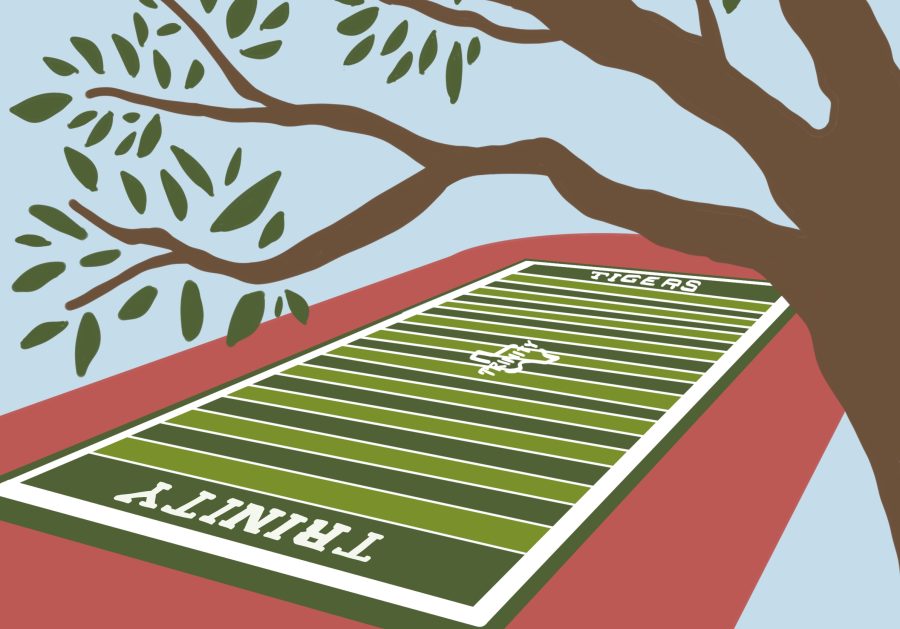The conundrum of sustainable sports fields
Environmentally friendly actions taken in sports aren’t as clear-cut as others
In sports, pollution is created in a variety of ways. From private transportation to the food that athletes receive, each part of athletic training has potential for improvements in sustainability. However, no single point of pollution is as large, or as physically visible, as the pollution created by the construction of sports infrastructure.
There are several points of contention in construction that climate activists, sports managers and engineers have to decide on, from implementing more efficient electricity production and reducing greenhouse gas emission, to decreasing light and sound pollution. However, these factors are often compounded by other factors like transportation can be reduced through other methods. What is left is pollution by way of water from impermeable surfaces, or its alternatives.
Impermeable surfaces, surfaces that don’t allow water to drain, make tennis courts slick and unsafe to play on, and also cause several environmental issues like runoff pollution from leaked vehicle oil. When looking at Trinity’s sports infrastructure, we see impermeable surfaces in many forms from the William H. Bell Center to the many tennis courts spread across campus. One solution given is replacing the concrete surface with more permeable surfaces such as clay or grass courts.
The switch, however, will not be easy because each alternative has its own problems. Utathya Nag, a sports journalist, in an article on the official Olympics website, points out that gameplay will be changed with these different surfaces. An example is clay tennis courts, as Nag describes.
“Balls generally tend to hold up on these surfaces and bounce high, making hitting quick winners difficult. They are much slower than grass courts and lead to longer rallies. Hence, matches on clay courts can push a human body to its limit and are often determined by a player’s endurance and ability to deceive their opponent with craft,” Nag said.
Another issue arises specifically on grass courts where fertilizer use in maintaining the court would result in a different kind of water pollution called runoff pollution. This problem extends past tennis though to all-natural grass fields. In Trinity’s case, this points to soccer, more specifically the Paul McGinlay field, the only Trinity field to retain its natural grass surface. Besides fertilizer, there are other forms of runoff pollution from the maintenance of natural grass fields such as pesticides.
With these drawbacks, a possible solution is the replacement of natural grass fields with artificial turf. However, this brings up a few new issues. While turf provides a synthetic, low-maintenance surface with an efficient water drainage system that is able to prevent most forms of chemical water pollution, it still holds several problems that prevent its unanimous use as a sustainable alternative.
First is the possible injury trap that artificial turf has. According to Katerina Kerska, a medical student from the University of Michigan, in an article from the National Center for Health Research, artificial turf increases chances of lower body injuries.
“They found that posterior cruciate ligament (PCL) tears occurred almost 3 times as often on turf than on grass. Athletes playing at lower levels experienced anterior cruciate ligament (ACL) tears 1.6 times more often on turf than they did on the grass. There were 142 ACL tears on turf in Divisions 2 and 3 compared to 111 [ACL tears] on natural grass despite athletes spending more time on grass,” Kerska said.
This isn’t including the chemical and biological effects artificial turf has on both the players and the surrounding environment, as most artificial turf is made of nylon and rubber which don’t decompose. As such, health issues from fumes caused prolonged heat or allergic reactions to latex from both athletes and surrounding wildlife, causing further hesitancy in complete acceptance.
There are many different ways to try and make sports infrastructure more environmentally sustainable. However, with these changes, we need to ensure the continued safety of both our athletes as well as prevent different environmental damages. By looking into research and acting on the best data we have, sports will be fun both for us and for the environment one stadium at a time.

Hello, my name is Nicholas Chen. I'm a freshman who is a sports writer for the Trinitonian, joining in the 2022 to 2023 school year. My major is International...

Hi guys! My name is Lily Zeng, and I am a sophomore from Memphis, TN majoring in Urban Studies with an interest in a Spanish major or minor. My favorite...





